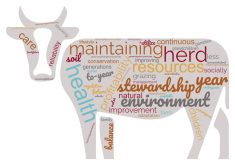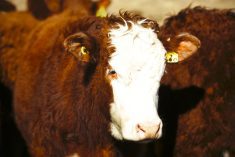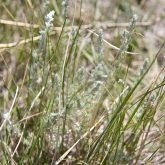One of the side effects of the current COVID-19 pandemic is that Canadians have begun to look at the world through a different lens. Priorities have shifted and lifestyles have been altered.
Everyone from producers, to small businesses, to global agribusinesses are adjusting to a new-look marketplace. It’s meant a course correction for some organizations, while others have been able to stay the course.
The Canadian Roundtable for Sustainable Beef (CRSB) is one such group. Formed with the long game in mind, much consultation was put into forming the body to define, verify and certify beef sustainability in Canada in the journey from pasture to plate.
Read Also

What to know before you go to Agribition 2025
If you’re attending Agribition 2025, this is the place to find out about tickets, dates and what’s happening this year.
It’s clear the sustainability motives for the Roundtable have only solidified through the last few months. In fact, the volume of members and observers in the CRSB has grown, with the recent approval of new participants such as Sysco Canada and Macgregors Meat and Seafood of Toronto.
“We’re continually talking to new people interested in various aspects of the program,” says Andrea White, community engagement and marketing manager for CRSB. “It’s exciting to see interest growing in what we’re doing and in sustainability in general.”
The more than 110 members in the CRSB cover the whole realm of beef production from academic institutions to producer associations, processors to retail and food service, NGOs in environmental and animal care areas to food businesses that support agriculture and the beef industry.
With the pillars of environmentally sound, socially responsible and economically viable actions, the CRSB offers a certification process for beef produced in a way that prioritizes the planet, people, animals and progress, using a third-party verification process.
The result is a logo that consumers can trust as meaning the beef product they see has been sourced with a process that ensures those priorities all along the way. And it’s becoming clear Canadians are looking for that even as they’ve been shopping for groceries online or doing take-out instead of going to restaurants.
“People are becoming even more aware of where their food comes from, how it’s raised, and starting to make the connection between food and agriculture, so I think that’s an opportunity that will come out of this,” White adds. “They are still looking for assurances that the food system has those checks and balances in place, and we have the program to back that up for Canadian beef.”
It’s a consumer ask global food provider Cargill knows well. The company is one of the founding partners of the CRSB Canadian beef sustainability initiative and a leader in taking the program from concept to reality.
Gurneesh Bhandal, senior sustainability manager at Cargill Protein, describes sustainability as a demand-driven priority.
“Our customers are asking us, ‘What can we say about the Canadian beef industry, about Canadian beef,'” she explains. “Consumers are asking for a story with their beef — where does it come from, how was it raised sustainably?
“Producers themselves, or even processors like us, are not consumer-facing,” says Bhandal. “We don’t have that direct link to consumers — whereas retailers and foodservice partners do, so we need to equip them to tell the real story about Canadian beef.”
Bhandal acknowledges the current situation has heightened interest and expectations for the whole food supply chain to be safe, sustainable and resilient to these types of crises.
“So I do think going forward there will be increased interest in that transparency.”
That’s why Cargill’s commitment to its part of the sustainability initiative is undeterred by COVID-19.
“One thing that has remained consistent is we definitely have more demand for product that can be marketed as certified sustainable beef than the supply, and that is still very much a thing we are managing through. The pandemic has even enhanced the conversation for Cargill in that we are thinking about what resiliency and sustainability means for our facilities, supply chains and agricultural communities in new and different ways.”
Bring on the beef
Bhandal points out Cargill’s participating customers have been supportive, continuing to source the volume they need to make consumer-facing claims despite the COVID-19 challenges.
“If anything, our customer participation is expanding,” she adds.
“As well as growth with our existing customer base, we continue to have conversations with several other customers wanting to make similar on-product claims, so we’re having those discussions about building the supply for them.”
That’s a message the CRSB hopes to see producers take to heart, according to White.
“As more and more of retail and food service systems get back up and running, they’re going to be looking for those value propositions for consumers. We want producers to know demand remains strong, and it’s worth their time and investment in becoming certified, because the supply chain is looking to source from certified farms and ranches.”
The numbers have been encouraging. As of March 2020, 8.7 million pounds of certified beef has been sourced by participating foodservice and retail partners since the start of the initiative. There’s also been a 40 per cent increase in producer certification in the last two years, and a 28 per cent increase since last year. Approximately 68 per cent of cattle feeding bunk space is now available at certified sustainable feedyard operations.
But the CRSB program needs involvement from all parties to reach new heights and that’s why cow-calf producers are being encouraged to consider their important role as the initial sustainability link.
Fill the gaps
To encourage producers to complete the audit process, Cargill introduced an incentive in 2018. Cargill’s sustainable beef sourcing initiative provided credits for any cattle that move through the system at certified stops all along the way. The average payment per individual cattle movement is just under $18. Data up until March 2020 showed the initiative distributed over one million dollars in credit payments to producers. Previously called a pilot program, Cargill’s certified sustainable beef sourcing has become a long-term initiative, and is now accessible to eastern Canadian livestock producers. That became possible with the recent CRSB certification of the Cargill facility at Guelph, Ont.
“We’re working now with our partners in the East to establish the systems we need to ensure cattle coming into our Guelph facility are tracked, and to set up financial credits for producers in eastern provinces as well,” says Bhandal. “We have a lot of cattle that move from Ontario and Quebec, and also Manitoba, to our Guelph facility, so we’re hoping more producers in that region will be encouraged to participate.”
Another supportive recent industry development has been the JBS facility in Brooks, also one of Canada’s large beef entities, becoming a certified sustainable processor as well.
Chop, chop
Meantime, just over a week after Chop Steakhouse and Bar announced it had been awarded use of the CRSB Certified mark for beef sustainability on one of its most popular menu items, the Chop Burger, governments began to respond to the pandemic in Canada. The company’s 14 steakhouses across the country were shut down, and more than 1,000 employees were laid off.
“It was a day I never really thought we’d see,” admits Marcel Blais, president of Chop, speaking during the May 19 CRSB webinar on the impact of COVID-19 and opportunities for sustainability of the beef industry.
Chop was one of the businesses to quickly re-evaluate and adapt, opening take-out and delivery services at select locations several weeks later. In the webinar, Blais urges ranchers and farmers to consider the investment of getting certified, despite the current tough times.
“Each of us has a part to play,” says Blais. “Look, I recognize producers out there are suffering right now. This is a difficult time. I truly do know what’s it’s like to be a small-business owner facing the prospect of potentially not existing in the near or middle future, and so I recognize the challenges ahead of us.
“Having said that, history would show those organizations that are willing to take a leadership role, take some bold action and invest where they think they can win often end up by winning. I would suggest one of the reasons we’re struggling to get CRSB designation on all of our menu items is we just don’t have enough producers signed up yet. What a difficult conundrum — go invest time and energy in a time when you have neither to give. But those are the kinds of questions being thrust on all of us as business people. From our standpoint, this movement would certainly pick up steam and speed if we had a growing number of producers jump on board.”
Although the Chop burger with the designation hasn’t had a fully “open” market test yet, Blais does report that the burger has been one of their top sellers for take-out and delivery, and they continue to get good feedback on the sustainability feature on the burger.
Building bridges
The CRSB is doing its part in helping build bridges to consumers by providing background and science-based credibility, but also by providing some real-life stories on the website, under the “Meet the Players” section.
There you’ll find a variety of producers and others in the supply chain telling their own stories, from their own operations. Some new video profiles have just been added, and White says they’re always looking for more producers to share.
“For anyone certified we welcome them to submit a profile. We want to tell those stories,” she says.
White also reminds producers if they have completed the audit, it’s important for them to communicate that when selling their cattle to ensure they stay in the certified sustainable stream all along the supply chain.
The CRSB did make some adjustments to how it operates given the current restrictions affecting on-farm visits. A temporary exception was introduced which allows for auditing to the Sustainable Beef Production Standard and Chain of Custody Requirements to be conducted remotely, at the discretion of the certification body.
For situations that do not allow for an on-site or remote audit to be completed, a six-month extension may be granted for operations requiring recertification. The exception is to remain in effect until Dec. 31, 2020, or until withdrawn by the CRSB, at its discretion. On-site processing plant certification audits have been postponed until further notice.
The last word
One of Bhandal’s favourite stories comes from when she was part of a panel discussion at a recent meeting.
“We had a beef producer on the panel who had gone through the audit, and he said, ‘It was an opportunity for me to share what I do and a celebration of my ranch.’ I loved that!” states the Cargill spokesperson.
“Ranchers are humble people and don’t like to brag, but he saw the audit as an opportunity to showcase all the great things he was doing on his operation, and so he called it a celebration.”
— Dianne Finstad brings an extensive background in agricultural and rodeo reporting to a variety of communications projects, working from her home in Red Deer County where she can still see both crops and cows.
















